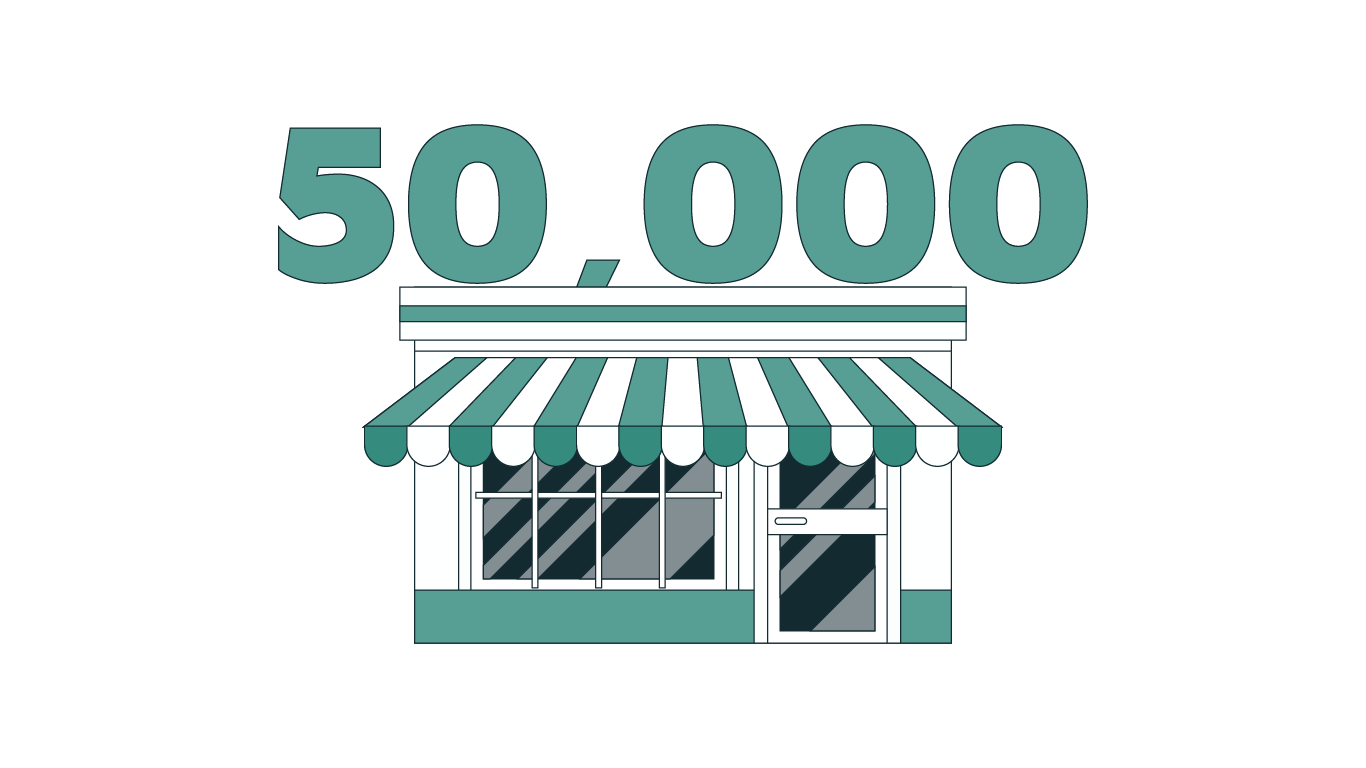The Corporate Sustainability Reporting Directive (CSRD), has been designed by the European Union to require large companies and all listed organisations to disclose information on their environmental and social impacts.
Since January 2024, the EU CSRD demands that large corporates (per the European Accounting Directive) report data for the 2024 financial year according to the newly developed European Sustainability Reporting Standards (ESRS). These initial reports will be published in 2025.
This article explores what the CSRD is as well as the reasons behind its implementation, the timeline for compliance depending on company size and structure, reporting requirements, tips for preparing for CSRD and the challenges that organisations might face.
|
Table of Contents
|
 Evolution of CSRD
Evolution of CSRD
The Corporate Sustainability Reporting Directive has evolved from existing legislation aimed at providing stakeholders with a greater understanding of how companies tackle their responsibilities in relation to environmental, social and corporate governance (ESG) matters.
Specifically, CSRD is an amendment to 2014’s Non-Financial Reporting Directive (NFRD). Companies under the scope of NFRD were categorised as public interest entities (PIE), which back in 2014 included those with:
- more than 500 employees and
- and a balance sheet total of more than €20,000,000
- or a net turnover of more than €40,000,000.
This affected just over 11,000 businesses across the EU, which were required to report on:
- Their business model
- Their ESG policies
- Their ESG risks
- Their non-financial key performance indicators (KPIs)
- And details of performance in the following categories:
- Board diversity
- Anti-corruption and bribery measures
- Environmental issues
- Social issues
- Employee treatment
- Human rights issues
However, with the introduction of SFDR (Sustainable Finance Disclosure Directive) and the need for investors to access data on companies’ ESG performance, the EU looked to expand the scope and scale of the NFRD.
As such, the CSRD was conceived. Lawmakers tasked the independent European Financial Reporting Advisory Group (EFRAG) with developing the CSRD requirements and their practical application called ESRS (European Sustainability Reporting Standards). The goal was to modernise the requirements of the NFRD, ensure comparability of data and their calculation methodology, and make the legislation more robust.
In the words of the European Commission on the need to supersede the NFRD and strengthen reporting requirements: “Reports often omit information that investors and other stakeholders think is important. Reported information can be hard to compare from company to company, and users of the information are often unsure whether they can trust it.”
CSRD will also apply to more businesses than NFRD, with an expected 50,000 businesses having to comply by 2029 at the latest.

What is the Corporate Sustainability Reporting Directive (CSRD)?
CSRD forms part of the wider European Green Deal, which is in place to help the EU reduce carbon emissions, decouple economic growth from resource use and ensure all people and places are protected from the negative impacts of climate change and other environmental challenges.
The aims of CSRD include:
- Strengthening the current rules on the reporting of non-financial information
- Making sustainability information available to stakeholders
- Ensuring sustainability information is comparable between organisations, in the same way that financial reporting can be analysed
- Improving transparency over sustainability so investors are aware of opportunities and risks relating to ESG topics
- Providing a basis on which to build a more sustainable economy within the EU.
It intends to achieve this through a range of methods and requirements for reporting on extra-financial performance. These include:
- Double materiality, meaning that an organisation must consider the material impact of the business on the ecosystem as well as the risks and opportunities that the ecosystem, including the economy, society and environment, provides to the business.
- Communicating the organisation’s performance on the basis of the Disclosure Requirements of material topics (out of 1,178 data points). These data points are set out in ESRS and include both qualitative and quantitative factors, with some being mandatory and others voluntary.
- Integration of financial and non-financial data in one report.
What changes will CSRD bring?
There are a number of changes that affected companies can expect to encounter as they fall within the scope of CSRD. The most pertinent is that there are now more organisations obliged to report their non-financial data in a standardised manner. Many businesses not affected by NFRD will find themselves under the remit of CSRD before 2029. Businesses currently reporting under NFRD will have more reporting to undertake.
In addition, affected organisations must now, by law, have their sustainability information audited to ensure its accuracy and reliability.
All companies within the directive’s scope must also digitally tag their disclosures in a set, machine-readable format (xBRL). This will feed into the European Single Access Point (ESAP) to make it easily accessible to stakeholders.
The cost of complying with CSRD is another change for organisations within the scope of the directive. EFRAG reports that: “…the largest cost in absolute value (both one-off and recurring) is faced by NFRD listed undertakings. (…) They expect to face, on average, a total of EUR 287 000 as a one-off cost of reporting and about EUR 320 000 on annual basis (of which EUR 173 000 for own costs equivalent to between 2 and 2.5 FTEs on average).
Non-NFRD non-listed undertakings incur the lowest administrative costs (…) Their costs are expected to reach about EUR 36 000 on a one-off basis and EUR 40 000 on a recurring basis.”
However, the short-term costs of implementing new procedures, training staff and investing in the sustainability of the company’s operations are likely to be mitigated by medium-term gains in the form of the emergence of a climate of trust within the corporate world as stakeholders gain access to audited and standardised information they can use to assess risks and opportunities.
Who will be affected and what is the deadline?
This table illustrates which companies will be affected by CSRD and when they need to report in accordance with the directive, as well as the financial years to which their first reports relate.
| Company size | Date of application |
|---|---|
Large European and EU subsidiaries of non-European companies that meet the NFRD thresholds:
|
2025 (FY 2024) |
Other large European (listed and unlisted) and EU subsidiaries of non-European companies, which meet at least two of the criteria:
|
2026 (FY 2025) |
| SMEs (both European and non-European) listed on a public market (not including micro-enterprises) | 2027-2029 (from FY 2026) |
| Other large non-European companies (a subsidiary or branch based in the European Union) with turnover of more than €150,000,000 in two consecutive years in the EU. These companies must report on the whole group’s performance, including non-EU companies. | 2029 (FY 2028) |
Micro-enterprises – businesses with:
|
No obligation |
| Non-listed SMEs | No obligation |
Geographical reach
Although the CSRD is a European law, developed by the European Union, it also applies to international companies that have securities listed on a market regulated in the EU (other than EU multilateral trading facilities) or have a significant presence within the EU, as displayed in the above table. The latter criterion is referred to as the Turnover Test.
In February 2024, the European Council and Parliament agreed to delay the requirement for third-country companies with a €150 million turnover in the EU to implement the CSRD standards for two years. These non-EU businesses would have been obliged to adopt the ESRS rules in the financial year 2024, ahead of reporting from the 2028 financial year. They will now not have to implement the standards until 2026, but the requirement to report from FY 2028 remains.

Reporting requirements
There are 12 sector-agnostic reporting standards that form the basis of the CSRD requirements. These are broken down into four main areas:
- Cross-cutting standards
- Environmental standards
- Social standards
- Governance standards
Sector-specific standards
In addition, CSRD also dictates that all companies in certain industries, such as the oil and gas, automotive and agricultural sectors, should report on information pertinent to their industry. These sector-specific standards were due to be implemented as of June 2024, but in January of that year, the Legal Affairs Committee of the European Parliament agreed to delay this element of the reporting requirements until 2026.
How to prepare for CSRD compliance
No matter where you stand on the timeline for CSRD compliance, it is advisable to be prepared to comply with the directive as soon as possible. Here are the steps you can take to ensure a smooth transition:
Conduct a gap analysis
Dig down into your current reporting practices and consider if you comply with the standards on double materiality assessment and the relevant disclosure requirements. Look at your data, processes and systems and cross-reference them with the required data points.
Train staff
With the new requirements, a new set of skills will be needed to enhance the reporting process. You must make sure that employees understand what their obligations are, which data must be collected and how to action that in an efficient manner using the tools at their disposal. Invest in training to bring employees up to speed.
Engage with stakeholders
At times of major adjustment, such as the implementation of a new directive like the CSRD, stakeholders can have concerns over how prepared the organisation is. Be open and honest in your outreach and set out the company’s plan to meet the requirements of the law. This will ease any worries from investors and regulators, increasing trust in the organisation.
Plan for regular updates
As evidenced by the January 2024 announcements regarding delays to the implementation of sector-specific standards and the application of the directive to non-EU companies, stay alert for changes to the requirements that affect your business. Use the industry press and your corporate networks to stay abreast of developments.
What are the consequences of non-compliance?
The CSRD requires that “Member States shall ensure that there are effective systems of investigations and sanctions to detect, correct and prevent inadequate execution of the statutory audit and the assurance of sustainability reporting.”
These sanctions will vary depending on the member state. For example, in France, company directors could face a financial sanction of up to €81,400 and a maximum of five years in jail for non-compliance.
Challenges to businesses
- The directive requires more detailed and comprehensive sustainability reporting than currently mandated, which may be complex to implement for businesses.
- Businesses must enhance their data collection and management processes to gather the necessary ESG information in accordance with the CSRD.
- Adapting to new reporting standards may involve increased initial costs for expenses such as system upgrades, training and potential consultancy fees.
- Companies must understand and integrate the new reporting standards into their existing frameworks, which can be challenging as it can involve wholesale changes to working practices.
- There are risks associated with potential penalties or reputational damage for non-compliance with the directive.
- Businesses may require additional resources to meet the reporting demands, including staffing and technological investments.
- Non-EU companies with significant operations in the EU will also need to comply, adding to the complexity for global businesses that might not be as in tune with EU law as a result of their location.
FAQs
Is CSRD mandatory?
Yes, the Corporate Sustainability Reporting Directive (CSRD) is mandatory for large companies and listed entities within the EU. Reporting will also be mandatory for non-EU companies with entities in the union that meet the threshold requirements.
Will CSRD replace SFDR?
No, CSRD will not replace the Sustainable Finance Disclosure Regulation (SFDR). They serve different purposes within the EU’s sustainability framework. CSRD targets corporations and requires them to measure their sustainability performance against the EU taxonomy. SFDR targets investors and dictates how financial products align with the taxonomy.
Is CSRD replacing NFRD?
Yes, CSRD is set to replace the Non-Financial Reporting Directive (NFRD), expanding and enhancing its reporting requirements.
How does CSRD align with the Global Sustainability Goals?
CSRD aligns with the global sustainability goals by promoting transparency in ESG reporting, supporting the broader objectives of the UN Sustainable Development Goals.
Does CSRD apply to non-listed companies?
Yes, CSRD applies to large companies that are not listed, including non-EU companies with significant operations in the EU. It does not apply to non-listed SMEs (with less than 250 employees).
Can companies outside the EU be affected by CSRD?
Yes, non-EU companies can be affected if they have substantial business activities within the EU, passing the threshold for the directive.
How will CSRD requirements impact your sustainability reporting strategy?
CSRD requirements will necessitate more detailed and comprehensive sustainability reporting, potentially leading to the need for enhanced data collection, improved reporting systems and increased transparency in ESG matters.
How can companies integrate CSRD with other reporting obligations?
Companies can integrate CSRD with other reporting obligations by aligning their reporting processes, utilising unified frameworks and adopting integrated reporting tools to ensure consistency and compliance with multiple regulations.
ConclusionAll About The CSRD (Corporate Sustainability Reporting Directive)The EU CSRD is now in effect for the first group of companies that meet the requirements. It will require significant resources to comply with the directive in the first instance, but the ability to promote your sustainable credentials using standardised data will help improve transparency in the corporate world and reduce greenwashing. The directive also provides a driving force to help meet ambitious climate targets in the EU.
For help building an ESG strategy that improves the market’s perception of your business while helping you ensure compliance with CSRD, you can contact Euronext Corporate Services’ ESG Advisory. |
Related articles
-
New Governance solutions with AGM Voting Insight and ESG Data distribution
Read the article -
CSRD Reporting Requirements: A Comprehensive Guide
Read the article -
How to Tell a Powerful Equity Story (Step-by-Step)
Read the article
Share this post


